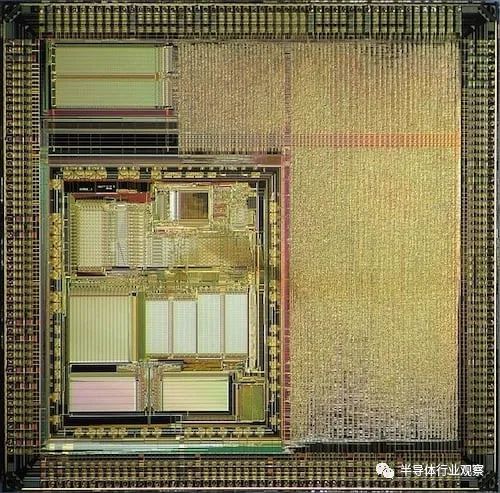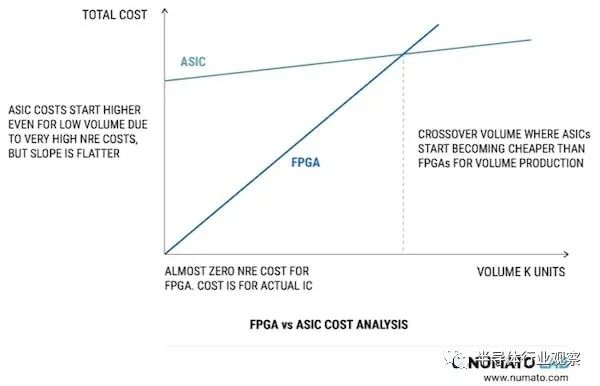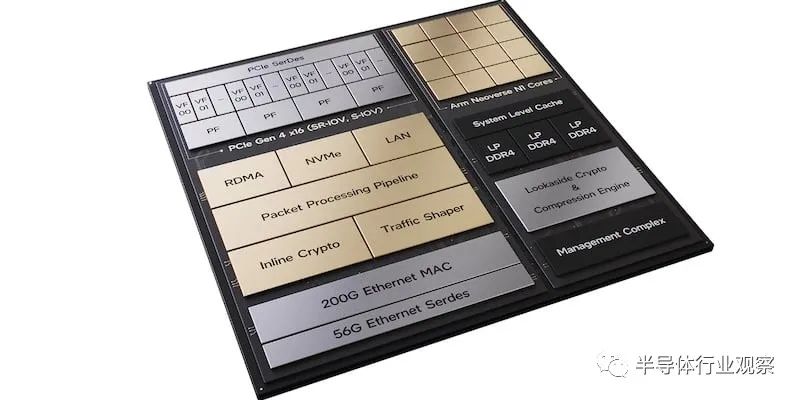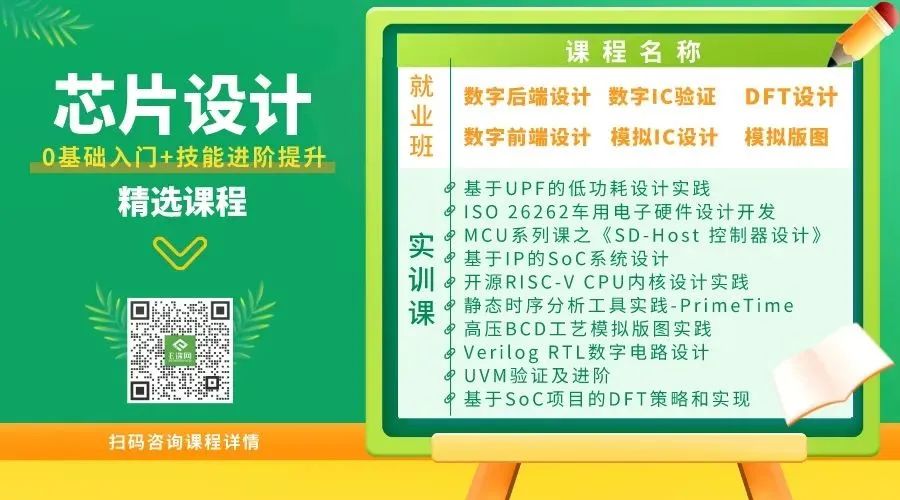
Source: Content compiled by Semiconductor Industry Observer (ID: icbank) from allaboutcircuits, thank you.
As an indispensable part of modern electrical engineering, Application-Specific Integrated Circuits (ASICs) form a diverse set of integrated circuits (ICs) that help designers optimize complex electronic devices.
There was a time when discrete components (mainly resistors, capacitors, inductors, transistors, and diodes) were sufficient for many electrical design projects. Today, it is rare to see a circuit board without at least one IC, and it is common to find circuit boards filled with ICs of various shapes and sizes. The widespread adoption of ICs in modern electrical engineering is closely related to the abundance of microchips that engineers can easily find, evaluate, purchase, and implement. However, off-the-shelf ICs sometimes do not provide a direct path to optimized solutions, in which case engineers may consider using ASICs.
What is an Application-Specific Integrated Circuit? How is it defined?
There is no official statement on the exact meaning of ASIC, and many electronics professionals may not always agree on what exactly constitutes an ASIC or whether a specific component should be classified as an ASIC. A good starting point for the definition of ASIC is:
“An integrated circuit designed for a specific customer, application, or market using cell-based technology, where the necessary functional blocks are extracted, interconnected, and simulated from a cell library to provide the desired system functionality and performance level. This definition excludes ICs designed using traditional ‘custom’ design techniques.”
The first part of this definition—ICs designed for a specific customer, application, or market—provides a broader and possibly more general understanding of the term. However, the second part of the definition is helpful because it distinguishes “ASIC” from simple “custom ICs.” If ASICs are the same as custom ICs, why do we need the term ASIC?
The complete definition identifies ASICs as ICs that provide custom functionality without requiring a fully custom design process. Instead, custom functionality is achieved through a process similar to PCB design. When drawing a schematic, we take components from a library and interconnect them, sometimes verifying parts of the schematic through simulation. For ASICs, designers take functional blocks from the library, interconnect them, and verify functionality and performance through simulation.
For example, Figure 1 shows an ASIC that combines a standard Digital Signal Processor (DSP) core with additional circuits required for the customer’s intended application.

Example ASIC with DSP
What does ‘specific application’ mean in ASIC?
The term ‘specific application’ in ASICs can be somewhat misleading. In current electrical engineering terminology, ‘application’ typically refers to the actual use of the electrical device. In other words, the application of an electrical device answers the question: what useful work is this device intended to perform?
For example, in his introductory article on filters, Nick Davis explains that filter applications include radio communication, DC power supplies, and audio electronic devices. This means that filter circuits are very useful in modules or systems designed to achieve wireless communication, generate reliable power voltage, or reproduce high-quality sound.
It turns out that ASICs are often not specific to a particular application, or at least they are not limited to a specific application. For instance, a highly integrated data converter ASIC may be primarily designed for medical imaging applications, but the same device could very well be applicable to industrial video processing or multi-channel automotive sensor networks. We can even think of something more general, such as a System on Chip (SoC) ASIC, which was initially designed for smartphones but contains enough functionality to succeed in various applications.
Therefore, I believe terms like Task-Specific Integrated Circuit (TSIC) or Function-Specific Integrated Circuit (FSIC) would be more accurate. However, TSIC and FSIC certainly do not roll off the tongue as easily as ASIC. Generally speaking, the design of an ASIC allows a chip to effectively perform a specific combination of tasks. Even if a specific application initially requires this combination of tasks, there may be various other applications where this ASIC would be an effective and ideal alternative to off-the-shelf ICs.
ASIC Design Cycle
Even with functional blocks from a cell library, designing and verifying custom ICs is not an easy task. If designers cannot find the required functionality or performance in off-the-shelf ICs, the first solution is often to “keep looking.” If difficulties persist, programmable logic—Field Programmable Gate Arrays (FPGAs) or Complex Programmable Logic Devices (CPLDs)—may be a reasonable choice.
Developing an ASIC can require months or even years of labor and millions of dollars in Non-Recurring Engineering (NRE) costs before manufacturing a single chip. Therefore, for high-volume projects with demanding performance requirements, management can often justify the time and money involved in ASIC development. If the volume is large enough, ASICs can actually become economically advantageous. Overall production costs decrease because the reduction in component and assembly costs is sufficient to offset the increased amortization of ASIC development costs. An example breakdown can be seen in Figure 3.

This figure compares the development costs of ASIC-based designs with those of programmable logic-based designs.
The following list conveys the main parts of an ASIC design project.
-
System requirements and other relevant constraints are used to formulate the specifications for the ASIC.
-
The specifications provide a framework for creating high-level architectural designs.
-
The high-level architecture is implemented as low-level logic. Like FPGAs and CPLDs, Hardware Description Languages (HDLs) such as VHDL and Verilog have become important tools in ASIC design.
-
The design is tested to verify functionality and timing.
-
The logical design must be translated into a physical layout.
-
After verifying the physical layout, the project can proceed to tape-out and manufacturing.
-
After successful manufacturing and packaging, the ASIC can undergo electrical testing and be integrated into prototypes for lab and field testing.

Example ASIC Diagram
This diagram conveys the high-level architecture of ASICs developed by Intel and Google. It is a “programmable network device” for “cloud and communication service providers.” This is just one example of a device that has undergone the ASIC design process.
In summary, ASICs are an important complement to high-performance and high-volume electronic devices that cannot be optimized using off-the-shelf components.

*Disclaimer: This article is original by the author. The content reflects the author’s personal views, and the Semiconductor Industry Observer reprints it solely to convey a different perspective, which does not represent the Semiconductor Industry Observer’s endorsement or support of this view. If there are any objections, please contact the Semiconductor Industry Observer.
Today marks the 3433rd issue shared by the Semiconductor Industry Observer, welcome to follow.
Recommended Reading
★153 billion transistor chip released, AMD officially challenges NVIDIA
★Domestic SiC, some good news!
★The next generation technology roadmap for silicon photonics
Semiconductor Industry Observer

『First Vertical Media in Semiconductors』
Real-time Professional Original Depth
Scan the QR code, reply with the keywords below to read more
Wafer|Integrated Circuit|Device|Automotive Chips|Storage|TSMC|AI|Packaging
Reply Submission to see “How to Become a Member of the Semiconductor Industry Observer”
Reply Search to easily find other articles you are interested in!
